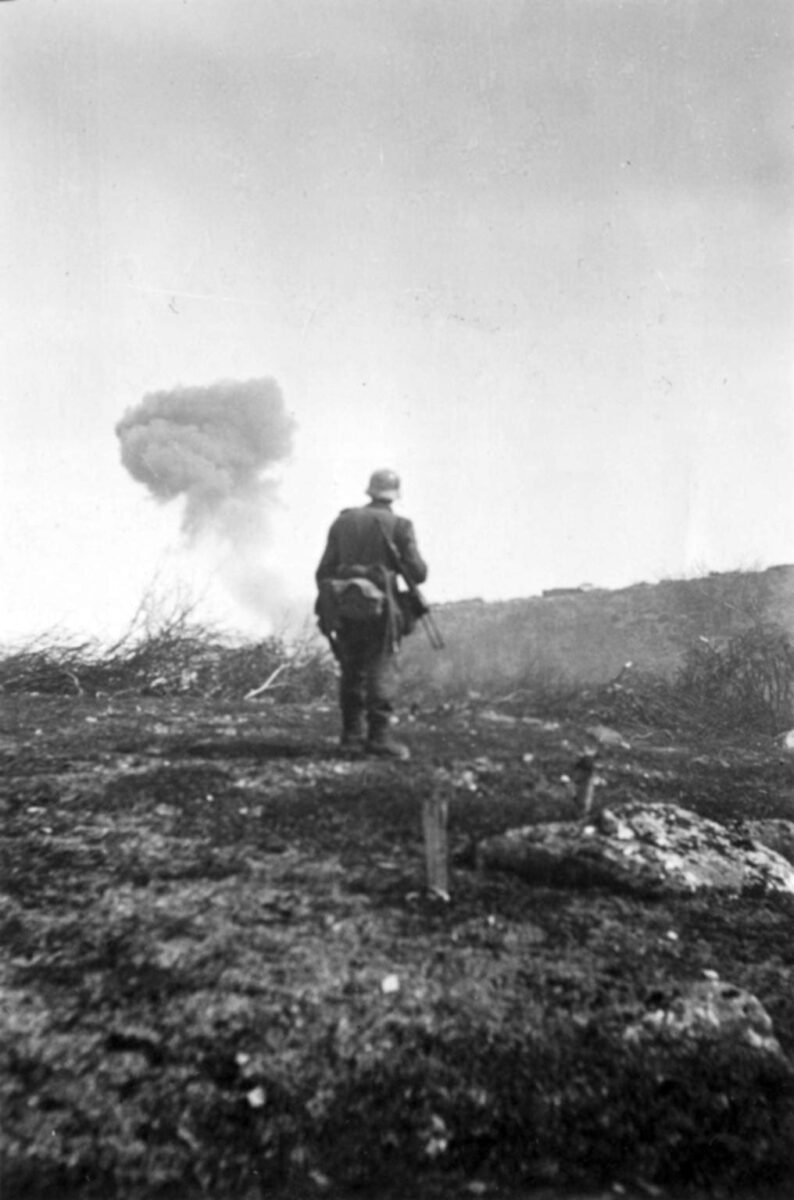German mountain ranger from the 137th Regiment of the 2nd Wehrmacht Division (2. Gebirgs-Division) observes a raid by Junkers Ju87 dive bombers on the fortifications of Soviet troops near the Titovka station in the Murmansk region. Operation Barbarossa, Eastern Front, World War II.
Location: Titovka, Murmansk region, USSR
Shooting time: June 29, 1941
Junkers Ju87 Stuka (German: Stuka = Sturzkampfflugzeug – dive bomber) is a single-engine two-seat (pilot and gunner) dive bomber and attack aircraft of the Second World War.
The Ju.87 made its first flight on September 17, 1935. Bombing was carried out using a special sight, which was used for both dive bombing and horizontal bombing. The accuracy of the Ju.87 bombing was surprisingly high – the bombs were usually placed in a circle with a diameter of 30 m. In Germany, the aircraft received the nickname “Stuka”, derived from the German word “Sturzkampfflugzeug” – diving combat aircraft. The Ju.87 was armed with two 7.92 mm MG-17 machine guns and one 7.92 mm MG-15 machine gun. The disadvantages of the aircraft were considered weak armor protection and low speed (only 410 km / h).
The aircraft was distinguished by an inverted gull wing, a developed non-retractable landing gear and, at the beginning of the war, a siren roar, which, in addition to intimidation, allowed the pilot to determine the dive speed by ear. Ju.87 can be seen in many war films – as the personification of the power of Germany and the symbol of the German blitzkrieg of 1939-1942.
Despite its low speed, short range and weak defensive armament, it was one of the most effective combat aircraft of the Luftwaffe thanks to its precision dive-bombing.
Junkers Ju87 since the Spanish Civil War has been successfully used for close air support of troops and combat ships. These aircraft formed the basis of the air offensive during the invasion of Poland in September 1939 and Norway in 1940. In May 1940, the Ju.87 played an important role in the blitzkrieg against the Netherlands, Belgium and France. Successful in air supremacy against ground targets, the Ju.87s, like many other dive bombers, were vulnerable to fighters. Already in the Battle of Britain, the lack of range, speed and defensive weapons affected. Ju.87 raids required strong fighter cover.
After the Battle of Britain, the capabilities of very accurate bombing came in handy for the German troops during the Balkan campaign, in Africa and the Mediterranean Sea, and then in the USSR, where the “bummen” were used for close air support, fighting ships and tanks until 1945. By the end of the war, they were almost replaced by assault versions of the Focke Wulf Fw.190, but were used until the last days of the war. Production of Junkers Ju87s of all variants from 1936 to August 1944 is estimated at 6,500.
The most famous Junkers Ju87 pilot was Hans Ulrich Rudel, who received the highest military awards among the military personnel of Nazi Germany.
